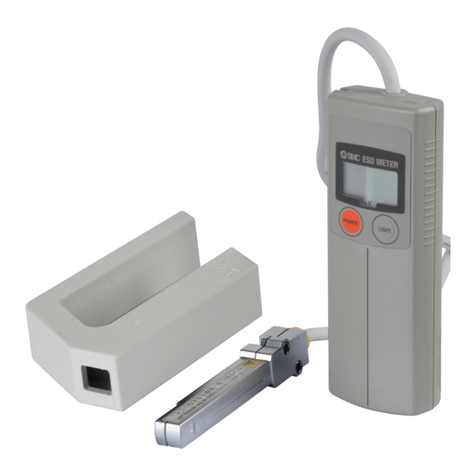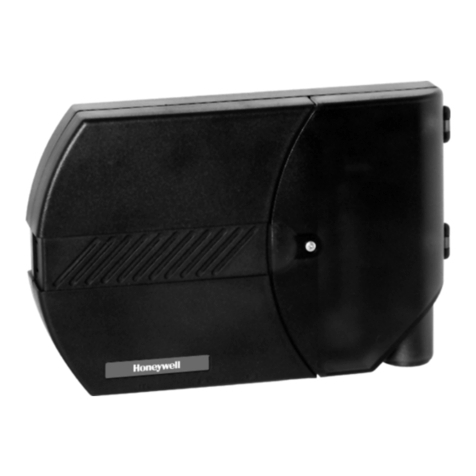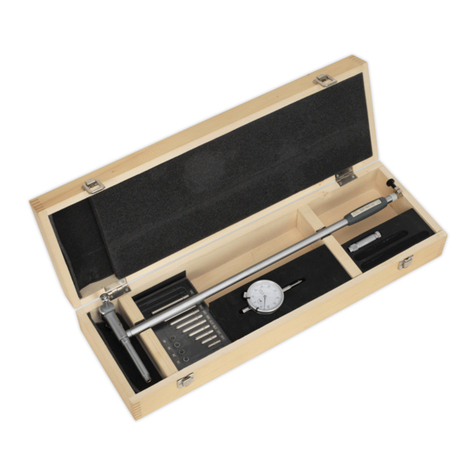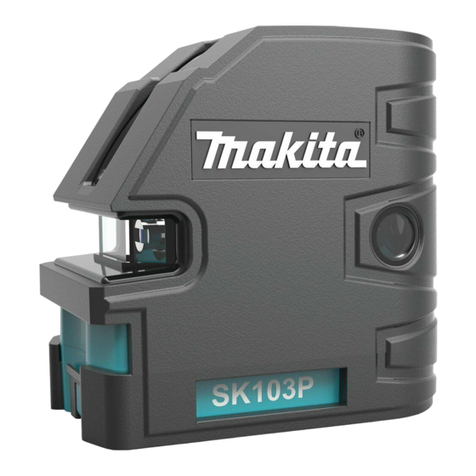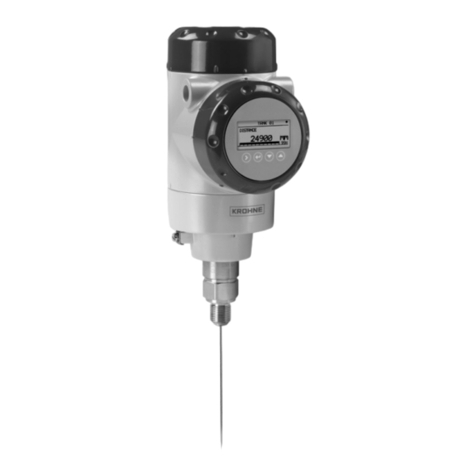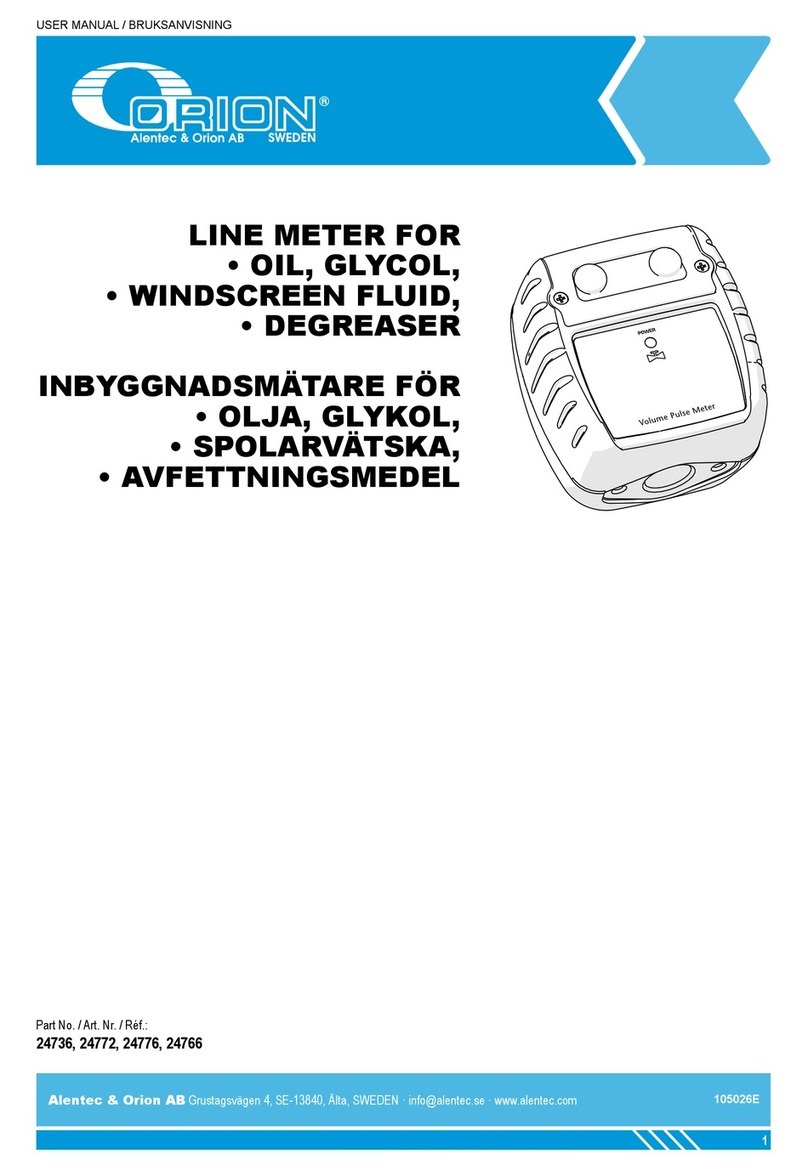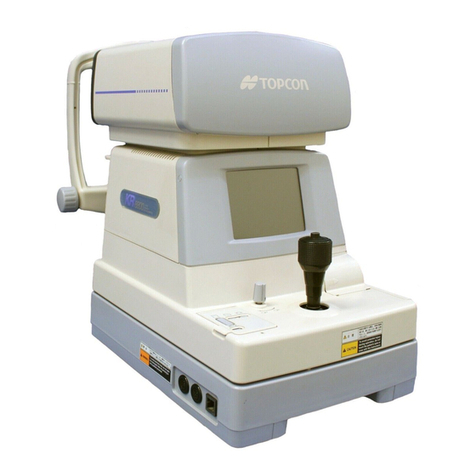Snap-On Diagnostics DGA 1000 User manual

DGA 1000
Diagnostic Gas Analyzer


i
Using this Manual . . . . . . . . . . . . . . . . . . . . . . . . . . . . . . . . . . . . . . . . . . . . . . . . . . . . . . . . . . . . . . . . . . .iii
Safety Information . . . . . . . . . . . . . . . . . . . . . . . . . . . . . . . . . . . . . . . . . . . . . . . . . . . . . . . . . . . . . . . . . . . .I
Introduction . . . . . . . . . . . . . . . . . . . . . . . . . . . . . . . . . . . . . . . . . . . . . . . . . . . . . . . . . . . . . . . . . . . . . . .1-1
Functional Description . . . . . . . . . . . . . . . . . . . . . . . . . . . . . . . . . . . . . . . . . . . . . . . . . . . . . . . . .1-2
Front Panel. . . . . . . . . . . . . . . . . . . . . . . . . . . . . . . . . . . . . . . . . . . . . . . . . . . . . . . . . . . . . . .1-2
Back Panel. . . . . . . . . . . . . . . . . . . . . . . . . . . . . . . . . . . . . . . . . . . . . . . . . . . . . . . . . . . . . . .1-4
Screen Displays . . . . . . . . . . . . . . . . . . . . . . . . . . . . . . . . . . . . . . . . . . . . . . . . . . . . . . . . . . .1-6
Action Indicators. . . . . . . . . . . . . . . . . . . . . . . . . . . . . . . . . . . . . . . . . . . . . . . . . . . . . . . . . . .1-7
Function Selection Symbols. . . . . . . . . . . . . . . . . . . . . . . . . . . . . . . . . . . . . . . . . . . . . . . . . .1-8
Screen Navigation Symbols . . . . . . . . . . . . . . . . . . . . . . . . . . . . . . . . . . . . . . . . . . . . . . . . .1-11
Optional Accessories . . . . . . . . . . . . . . . . . . . . . . . . . . . . . . . . . . . . . . . . . . . . . . . . . . . . . . . . .1-12
Standard Keyboard (not shown) . . . . . . . . . . . . . . . . . . . . . . . . . . . . . . . . . . . . . . . . . . . . .1-12
Optional Lightpen . . . . . . . . . . . . . . . . . . . . . . . . . . . . . . . . . . . . . . . . . . . . . . . . . . . . . . . . .1-12
Optional Oil Temperature Probe . . . . . . . . . . . . . . . . . . . . . . . . . . . . . . . . . . . . . . . . . . . . .1-12
Optional Remote Control Keypad Kit . . . . . . . . . . . . . . . . . . . . . . . . . . . . . . . . . . . . . . . . . .1-13
Specifications . . . . . . . . . . . . . . . . . . . . . . . . . . . . . . . . . . . . . . . . . . . . . . . . . . . . . . . . . . . .1-15
General Setup Tips . . . . . . . . . . . . . . . . . . . . . . . . . . . . . . . . . . . . . . . . . . . . . . . . . . . . . . .1-16
Standard Lead Connections . . . . . . . . . . . . . . . . . . . . . . . . . . . . . . . . . . . . . . . . . . . . . . . . . . . .1-17
To Analyzer . . . . . . . . . . . . . . . . . . . . . . . . . . . . . . . . . . . . . . . . . . . . . . . . . . . . . . . . . . . . .1-17
Connecting to a Vehicle . . . . . . . . . . . . . . . . . . . . . . . . . . . . . . . . . . . . . . . . . . . . . . . . . . . .1-18
Connecting the Optional Temperature Probe to the Vehicle . . . . . . . . . . . . . . . . . . . . . . . .1-19
Start-up . . . . . . . . . . . . . . . . . . . . . . . . . . . . . . . . . . . . . . . . . . . . . . . . . . . . . . . . . . . . . . . .1-20
Analyzer Screen Display Features. . . . . . . . . . . . . . . . . . . . . . . . . . . . . . . . . . . . . . . . . . . . . . . . . . . . .2-1
Measurement Screen . . . . . . . . . . . . . . . . . . . . . . . . . . . . . . . . . . . . . . . . . . . . . . . . . . . . . . . . . .2-1
CO Corrected . . . . . . . . . . . . . . . . . . . . . . . . . . . . . . . . . . . . . . . . . . . . . . . . . . . . . . . . . . . . .2-2
Lambda and AFR Calculation . . . . . . . . . . . . . . . . . . . . . . . . . . . . . . . . . . . . . . . . . . . . . . . .2-4
Lambda (l) and Catalytic Converter Efficiency . . . . . . . . . . . . . . . . . . . . . . . . . . . . . . . . . . . .2-4
O2 and NOx Measurement . . . . . . . . . . . . . . . . . . . . . . . . . . . . . . . . . . . . . . . . . . . . . . . . . .2-4
Air-Fuel Ratio and the Stoichiometric Point . . . . . . . . . . . . . . . . . . . . . . . . . . . . . . . . . . . . . .2-5
Test Menu . . . . . . . . . . . . . . . . . . . . . . . . . . . . . . . . . . . . . . . . . . . . . . . . . . . . . . . . . . . . . . .2-6
Vehicle Testing . . . . . . . . . . . . . . . . . . . . . . . . . . . . . . . . . . . . . . . . . . . . . . . . . . . . . . . . . . . . . . . . . . . .3-1
Preliminary Checks. . . . . . . . . . . . . . . . . . . . . . . . . . . . . . . . . . . . . . . . . . . . . . . . . . . . . . . . . . . .3-1
Testing Tips . . . . . . . . . . . . . . . . . . . . . . . . . . . . . . . . . . . . . . . . . . . . . . . . . . . . . . . . . . . . . .3-3
Setting Up the Vehicle . . . . . . . . . . . . . . . . . . . . . . . . . . . . . . . . . . . . . . . . . . . . . . . . . . . . . .3-4
Two-Speed Idle (TSI) Test . . . . . . . . . . . . . . . . . . . . . . . . . . . . . . . . . . . . . . . . . . . . . . . . . . . . . .3-9
Catalytic Efficiency Test . . . . . . . . . . . . . . . . . . . . . . . . . . . . . . . . . . . . . . . . . . . . . . . . . . . . . . .3-11
Optional Catalytic Converter Test Kit . . . . . . . . . . . . . . . . . . . . . . . . . . . . . . . . . . . . . . . . . . . . .3-11
Introduction. . . . . . . . . . . . . . . . . . . . . . . . . . . . . . . . . . . . . . . . . . . . . . . . . . . . . . . . . . . . . . . . .3-12
Functional Description . . . . . . . . . . . . . . . . . . . . . . . . . . . . . . . . . . . . . . . . . . . . . . . . . . . . . . . .3-12
Catalytic Converter Test . . . . . . . . . . . . . . . . . . . . . . . . . . . . . . . . . . . . . . . . . . . . . . . . . . . . . . .3-13
Pre-test Inspection . . . . . . . . . . . . . . . . . . . . . . . . . . . . . . . . . . . . . . . . . . . . . . . . . . . . . . . . . . .3-14
Test Preparation . . . . . . . . . . . . . . . . . . . . . . . . . . . . . . . . . . . . . . . . . . . . . . . . . . . . . . . . . . . . .3-14
Before Testing . . . . . . . . . . . . . . . . . . . . . . . . . . . . . . . . . . . . . . . . . . . . . . . . . . . . . . . . . . .3-15
Disabling the Fuel System . . . . . . . . . . . . . . . . . . . . . . . . . . . . . . . . . . . . . . . . . . . . . . . . . .3-17
Disabling the Ignition System. . . . . . . . . . . . . . . . . . . . . . . . . . . . . . . . . . . . . . . . . . . . . . . .3-17
Catalytic Converter Test Set-up . . . . . . . . . . . . . . . . . . . . . . . . . . . . . . . . . . . . . . . . . . . . . .3-18
Maintenance. . . . . . . . . . . . . . . . . . . . . . . . . . . . . . . . . . . . . . . . . . . . . . . . . . . . . . . . . . . . . . . . . . . . . . .4-1
Maintenance Schedule . . . . . . . . . . . . . . . . . . . . . . . . . . . . . . . . . . . . . . . . . . . . . . . . . . . . . . . . .4-1
Sample System . . . . . . . . . . . . . . . . . . . . . . . . . . . . . . . . . . . . . . . . . . . . . . . . . . . . . . . . . . .4-2
1– Leak Check Vacuum. . . . . . . . . . . . . . . . . . . . . . . . . . . . . . . . . . . . . . . . . . . . . . . . . . . . .4-4
2–Leak Check Gas. . . . . . . . . . . . . . . . . . . . . . . . . . . . . . . . . . . . . . . . . . . . . . . . . . . . . . . . .4-4
3–Gas Calibration Check . . . . . . . . . . . . . . . . . . . . . . . . . . . . . . . . . . . . . . . . . . . . . . . . . . . .4-4
Table of Contents

ii
Table of Contents
4–O2/Check Install . . . . . . . . . . . . . . . . . . . . . . . . . . . . . . . . . . . . . . . . . . . . . . . . . . . . . . . . 4-5
5–Gas Tag Values . . . . . . . . . . . . . . . . . . . . . . . . . . . . . . . . . . . . . . . . . . . . . . . . . . . . . . . . 4-5
6–Gas Calibration. . . . . . . . . . . . . . . . . . . . . . . . . . . . . . . . . . . . . . . . . . . . . . . . . . . . . . . . . 4-5
Test Leads . . . . . . . . . . . . . . . . . . . . . . . . . . . . . . . . . . . . . . . . . . . . . . . . . . . . . . . . . . . . . . 4-6
Front Panel and Exterior. . . . . . . . . . . . . . . . . . . . . . . . . . . . . . . . . . . . . . . . . . . . . . . . . . . . 4-6
Keyboard and Remote Control . . . . . . . . . . . . . . . . . . . . . . . . . . . . . . . . . . . . . . . . . . . . . . . 4-7
CRT Screen . . . . . . . . . . . . . . . . . . . . . . . . . . . . . . . . . . . . . . . . . . . . . . . . . . . . . . . . . . . . . 4-7
Sample Probe and Hose . . . . . . . . . . . . . . . . . . . . . . . . . . . . . . . . . . . . . . . . . . . . . . . . . . . 4-8
Troubleshooting . . . . . . . . . . . . . . . . . . . . . . . . . . . . . . . . . . . . . . . . . . . . . . . . . . . . . . . . . . . . . 4-9
Messages . . . . . . . . . . . . . . . . . . . . . . . . . . . . . . . . . . . . . . . . . . . . . . . . . . . . . . . . . . . . . . . 4-9
Control and Error Status . . . . . . . . . . . . . . . . . . . . . . . . . . . . . . . . . . . . . . . . . . . . . . . . . . . . . . 4-10
Accessory Kit . . . . . . . . . . . . . . . . . . . . . . . . . . . . . . . . . . . . . . . . . . . . . . . . . . . . . . . . . . . . . . 4-12
Maintenance Parts . . . . . . . . . . . . . . . . . . . . . . . . . . . . . . . . . . . . . . . . . . . . . . . . . . . . . . . . . . 4-12
Options . . . . . . . . . . . . . . . . . . . . . . . . . . . . . . . . . . . . . . . . . . . . . . . . . . . . . . . . . . . . . . . . . . . 4-12
Technical Support . . . . . . . . . . . . . . . . . . . . . . . . . . . . . . . . . . . . . . . . . . . . . . . . . . . . . . . . . . . 4-12
Fundamentals. . . . . . . . . . . . . . . . . . . . . . . . . . . . . . . . . . . . . . . . . . . . . . . . . . . . . . . . . . . . . . . . . . . . . 5-1
Combustion and Air-Fuel Ratios . . . . . . . . . . . . . . . . . . . . . . . . . . . . . . . . . . . . . . . . . . . . . . . . . 5-1
Combustion Emissions . . . . . . . . . . . . . . . . . . . . . . . . . . . . . . . . . . . . . . . . . . . . . . . . . . . . . 5-2
Oxides of Nitrogen (NOX) . . . . . . . . . . . . . . . . . . . . . . . . . . . . . . . . . . . . . . . . . . . . . . . . . . 5-3
Hydrocarbons (HC) . . . . . . . . . . . . . . . . . . . . . . . . . . . . . . . . . . . . . . . . . . . . . . . . . . . . . . . 5-6
Carbon Monoxide (CO) . . . . . . . . . . . . . . . . . . . . . . . . . . . . . . . . . . . . . . . . . . . . . . . . . . . . 5-7
Carbon Dioxide (CO2) . . . . . . . . . . . . . . . . . . . . . . . . . . . . . . . . . . . . . . . . . . . . . . . . . . . . . 5-8
Oxygen (O2) . . . . . . . . . . . . . . . . . . . . . . . . . . . . . . . . . . . . . . . . . . . . . . . . . . . . . . . . . . . . . 5-9
Interpreting Air-Fuel Ratios and Emissions. . . . . . . . . . . . . . . . . . . . . . . . . . . . . . . . . . . . . . . . 5-10
Stoichiometric Fuel Mixture. . . . . . . . . . . . . . . . . . . . . . . . . . . . . . . . . . . . . . . . . . . . . . . . . . . . 5-11
Catalytic Converters . . . . . . . . . . . . . . . . . . . . . . . . . . . . . . . . . . . . . . . . . . . . . . . . . . . . . . . . . 5-12
Vehicle Testing Procedures . . . . . . . . . . . . . . . . . . . . . . . . . . . . . . . . . . . . . . . . . . . . . . . . . . . . . . . . . 6-1
Testing Gasoline-Fueled Vehicles . . . . . . . . . . . . . . . . . . . . . . . . . . . . . . . . . . . . . . . . . . . . 6-1
Testing Propane-Fueled Vehicles . . . . . . . . . . . . . . . . . . . . . . . . . . . . . . . . . . . . . . . . . . . . 6-1
Data Collection Modes . . . . . . . . . . . . . . . . . . . . . . . . . . . . . . . . . . . . . . . . . . . . . . . . . . . . . 6-2
Engine Conditioning . . . . . . . . . . . . . . . . . . . . . . . . . . . . . . . . . . . . . . . . . . . . . . . . . . . . . . . 6-2
Tail Pipe Exhaust Gas Sampling . . . . . . . . . . . . . . . . . . . . . . . . . . . . . . . . . . . . . . . . . . . . . 6-2
Testing Under Load . . . . . . . . . . . . . . . . . . . . . . . . . . . . . . . . . . . . . . . . . . . . . . . . . . . . . . . 6-3
On-Road and Dynamometer Testing Under Load . . . . . . . . . . . . . . . . . . . . . . . . . . . . . . . . 6-4
Air Pump Test . . . . . . . . . . . . . . . . . . . . . . . . . . . . . . . . . . . . . . . . . . . . . . . . . . . . . . . . . . . . . . . 6-7
Carburetor Adjustments . . . . . . . . . . . . . . . . . . . . . . . . . . . . . . . . . . . . . . . . . . . . . . . . . . . . . . . 6-8
Vehicles Without Feedback Fuel Systems . . . . . . . . . . . . . . . . . . . . . . . . . . . . . . . . . . . . . . 6-8
Lean-Misfire Adjustment Test. . . . . . . . . . . . . . . . . . . . . . . . . . . . . . . . . . . . . . . . . . . . . . . . 6-9
Lean-Drop Adjustment Test . . . . . . . . . . . . . . . . . . . . . . . . . . . . . . . . . . . . . . . . . . . . . . . . . 6-9
Accelerator Pump Test . . . . . . . . . . . . . . . . . . . . . . . . . . . . . . . . . . . . . . . . . . . . . . . . . . . . . . . 6-10
Power Valve Test . . . . . . . . . . . . . . . . . . . . . . . . . . . . . . . . . . . . . . . . . . . . . . . . . . . . . . . . . . . 6-10
High Fuel Level In Float Chamber Test . . . . . . . . . . . . . . . . . . . . . . . . . . . . . . . . . . . . . . . . . . 6-11
Combustion Gases in the Cooling System Test . . . . . . . . . . . . . . . . . . . . . . . . . . . . . . . . . . . . 6-12
Fuel Leak Test . . . . . . . . . . . . . . . . . . . . . . . . . . . . . . . . . . . . . . . . . . . . . . . . . . . . . . . . . . . . . 6-13
Exhaust Leak Test . . . . . . . . . . . . . . . . . . . . . . . . . . . . . . . . . . . . . . . . . . . . . . . . . . . . . . . . . . 6-14
Fumes In Passenger Compartment Test . . . . . . . . . . . . . . . . . . . . . . . . . . . . . . . . . . . . . . . . . 6-15
No-Start Condition—Fuel Test . . . . . . . . . . . . . . . . . . . . . . . . . . . . . . . . . . . . . . . . . . . . . . . . . 6-16
Diagnostic Technique . . . . . . . . . . . . . . . . . . . . . . . . . . . . . . . . . . . . . . . . . . . . . . . . . . . . . . . . . . . . . . 7-1
Data Analysis Guidelines . . . . . . . . . . . . . . . . . . . . . . . . . . . . . . . . . . . . . . . . . . . . . . . . . . . . . . 7-1
Air-Fuel Ratio Effects . . . . . . . . . . . . . . . . . . . . . . . . . . . . . . . . . . . . . . . . . . . . . . . . . . . . . . . . . 7-3
Five Gas Combination Readings . . . . . . . . . . . . . . . . . . . . . . . . . . . . . . . . . . . . . . . . . . . . . . . . 7-4

iii
This manual contains instructions for setup and use of the
DGA 1000 Gas Analyzer
and dynamometers. A table of contents
and is provided to make this manual easy to use.
Some of the information shown in text or illustrations is obtained
using optional equipment. A
Snap-on
Sales Representative can
determine option availability.
For Service or Technical Support, call Emissions Technical
Support Group at 1-800-225-5768.
Conventions
This section contains a list of conventions used in text.
Check Note
A check note provides additional information about the subject in
the preceding paragraph.
Example:
✓Keep the probe tip openings clean and free of debris.
Testing Tips
Testing tips provide information that applies to a specific test. Each
testing tip is introduced by this icon for easy identification.
Example:
X
Check vehicle manufacturer specifications and procedures
before testing.
Chapter References
Additional information in text is referenced by chapter number and
section name.
Example:
For additional information refer to
Chapter 4–
Maintenance
.
Using this Manual

iv
Using This Manual
Equipment Damage
The possibility of damage to vehicle or equipment is introduced by
a signal word indicating this condition.
Example:
After extended testing, operate the engine at 1500 RPM
with no load for several minutes with the cooling fan in
place. This helps reduce test induced engine heat.
Safety Messages
Safety messages are provided to help prevent personal injury and
equipment damage. All safety messages are introduced by a
signal word indicating the hazard level. The types of safety
messages are:
Indicates an imminently hazardous situation which, if
not avoided, will result in death or serious injury to the
operator or to bystanders.
Indicates a potential hazard which, if not avoided,
could result in death or serious injury to the operator
or to bystanders.
Indicates a potential hazard which, if not avoided, may
result in minor or moderate injury to the operator or to
bystanders.
The three-part message panel, used with safety messages, uses
three different type styles to further define the potential hazard:
•
Normal type states the hazard,
•
Bold type states how to avoid the hazard, and
• Italic type
states the possible consequences of not avoiding
the hazard.
Some safety messages contain visual symbols with signal words.
Example:
Risk of burns.
Do not remove radiator cap unless engine is cold. Pressurized
engine coolant may be hot.
Hot engine coolant can cause serious burns.

Using This Manual
v
Abbreviations
The following abbreviations are used in this manual.
A current, amperage
AIR Air Injection Reaction
Ccarbon
CNG Compressed Natural Gas
CO carbon monoxide
CO2carbon dioxide
COMM communication
DTC Diagnostic Trouble Code
EGR exhaust gas recirculation
FID flame ionization detector
Hhydrogen
HC hydrocarbons
Hz hertz
km/h kilometers per hour
lb pound
LPG Liquefied Petroleum Gas (Propane)
mV millivolt
MIL malfunction indicator lamp
NDIR Non-Dispersive Infrared
NO nitric oxide
NO2nitrogen dioxide
NOx oxides of nitrogen
NRLHP normal road load horsepower
O2oxygen
OBD On-board Diagnostics
OIML International Organization of Legal Metrology
PC personal computer
PCV positive crankcase ventilation
ppm parts per million
RPM revolutions per minute
TPS throttle position sensor
vol volume
°C degrees Celsius
°F degrees Fahrenheit

vi
Using This Manual
Trademark Acknowledgements
Snap-on®
is a registered trademark of Snap-on Technologies, Inc.
EquiServ®,
a unit of Snap-on Tools, is a registered trademark of Snap-on Tools Company.
Copyright Information
DGA 1000 Gas Analyzer Operating Instructions
©2001, Snap-on Diagnostics
The information, specifications and illustrations in this manual are based on the latest
information available at the time of printing.
Snap-on
reserves the right to make changes
at any time without notice.

I
Safety Information
For your safety, read this manual thoroughly before operating
the Analyzer System.
The
DGA 1000 Gas Analyzer
is intended to be used by skilled,
professional, and properly trained automotive technicians. The
safety messages presented here and throughout this user’s
manual are reminders to the operator to exercise extreme care
when using this test instrument.
There are many variations in procedures, techniques, tools
and parts for servicing vehicles, as well as in the skill of the
individual doing the work. Because of the vast number of test
applications and variations in the products that can be tested
with this instrument, the manufacturer cannot possibly
anticipate or provide advice or safety messages to cover every
situation. It is the automotive technician's responsibility to be
knowledgeable of the system that is to be tested. It is essential
to use proper service methods and test procedures and to
perform tests in an appropriate and acceptable manner that
does not endanger your safety, the safety of others in the work
area or the equipment or vehicle being tested.
It is assumed that, before using this tool, the operator has a
thorough understanding of vehicle systems. understanding the
principles and operating theories of vehicle systems is
necessary for competent, safe and accurate use.
Before using the
DGA 1000 Gas Analyzer
, always refer to and
follow the safety messages, and applicable test procedures
provided by the manufacturer of the vehicle or equipment being
tested.

II
Safety Information
Read All Instructions
Read all instructions and safety messages in this manual. All
safety messages in this section contain a signal word, a three-
part message, and, in some instances, a symbol/pictorial.
The signal word indicates the level of hazard in a situation.
•
Danger indicates an imminently hazardous situation which, if
not avoided, will result in death or serious injury to the operator
or bystanders.
•
Warning indicates a potentially hazardous situation which, if
not avoided, could result in death or serious injury to the
operator or bystanders.
•
Caution indicates a potentially hazardous situation which, if not
avoided, may result in moderate or minor injury to the operator
or bystanders.
Safety messages in this section contain three different type
styles.
•
Normal type states the hazard.
•
Bold type states how to avoid the hazard.
• Italic
type states the possible consequences of not avoiding
the hazard.
An icon, when present, gives a graphical description of the
potential hazard.
IMPORTANT SAFETY INSTRUCTIONS
Vehicle exhaust gases contain carbon monoxide (CO),
which is a colorless and odorless lethal gas.
• Perform tests in a well-ventilated area and route
exhaust outside while testing with engine running.
• Only run engines in a well-ventilated area (4 turns of
air per hour) and avoid breathing exhaust gases.
Extended breathing of exhaust gases can cause injury.
Ignition coils, coil terminals and spark plugs emit high
voltages.
Do not touch ignition coils, coil terminals and spark
plugs while they are in operation.
These components may cause injury.
Engine systems can malfunction expelling fuel, oil
vapors, hot steam, hot toxic exhaust gases, and other
debris.
Wear safety goggles, user and bystander.
Engine systems that malfunction can cause injury.

Safety Information
III
Risk of fire.
• Wear safety goggles and protective clothing,
user and bystander.
• Do not position head directly over or in front of
the carburetor or throttle body. Do not pour
gasoline down the carburetor or throttle body
when cranking or running the engine, when
working with fuel delivery systems or any open
fuel line. Engine backfire can occur when the air
cleaner is out of normal position.
• Do not use carburetor sprays or fuel injector
cleaning solvents when performing diagnostic
testing.
• Keep a dry chemical (Class B) fire extinguisher
rated for gasoline, chemical and electrical fires
in the work area.
Fire can cause death or serious injury.
A test vehicle may move if not properly prepared.
• Block the drive wheels before performing a test with
the engine running. Unless instructed otherwise, set
the parking brake and put the gear selector in
neutral (standard transmission) or park (automatic
transmission). If the vehicle has an automatic
parking brake release, disconnect the release
mechanism for testing and reconnect when testing
is completed.
• Do not leave a running engine unattended.
A moving vehicle can cause injury.
Gases produced by batteries are highly explosive.
• Avoid sparks when connecting or disconnecting
power leads to battery.
• Always connect red positive (+) power lead to
positive (+) battery terminal and the black negative
(-) power lead to a good vehicle ground as far away
from the battery as possible.
• Avoid making accidental connection between
battery terminals through tools, jumper leads, etc.
• Keep lighted cigarettes, sparks, flames and other
ignition sources away from batteries.
• Always keep a dry chemical (Class B) fire
extinguisher near work area.
Battery explosion can cause injury.

IV
Safety Information
The engine compartment contains electrical connections,
and hot or moving parts.
• Do not place test equipment or tools on fenders or
other places in the engine compartment.
• Keep yourself, test leads, clothing, and other objects
clear of electrical connections and hot or moving
engine parts.
Contact with electrical connections and hot or moving
parts can cause injury.
Misdiagnosis may lead to incorrect or improper repair
and/or adjustment.
Do not rely on erratic, questionable, or obviously
erroneous test information or results. If test
information or results are erratic, questionable, or
obviously erroneous, make sure that all connections
and data entry information are correct, and that the
test procedure was performed correctly.
Improper repair and/or adjustment may cause vehicle or
equipment damage or unsafe operation.
SAVE THESE INSTRUCTIONS

1-1
Introduction
The
DGA 1000 Gas Analyzer
is a versatile test instrument for
analyzing exhaust gases of internal combustion engines. When
used with other tools and equipment, the analyzer can also detect
and locate ignition, fuel, exhaust, emission control, and engine
service problems.
It is generally assumed that the fuel, ignition, and emission control
systems are functioning properly when exhaust gas concentrations
are within limits specified by the vehicle manufacturer or the local,
state or federal government. If exhaust gas concentrations exceed
those specified limits, repairs or adjustments are probably needed.
For more information on emissions and exhaust gases, refer to
Chapter 5–Fundamentals
✓Always follow manufacturer specifications when working
on emission control devices to comply with anti-tampering
laws.
1

1-2
Introduction
Functional Description
Front Panel
The front of the analyzer includes controls for operating the unit,
the monitor screen for viewing tests and the printer, which provides
a written record of test results. Descriptions of the items labeled on
the analyzer front view follow
Figure 1-1
.
A—9" Video Display Screen
Displays all screen information and symbols available for use with
each screen.
B—Enter Key and Arrow Keys
Use the:
— Middle ENTER key to select a chosen item or symbol.
— Arrow keys () around the ENTER key to:
•
Select a menu item or a symbol,
•
Move up and down to change a selected value, or
•
Move forward and backward within screens.
C—Infrared Sensor
Receives the signals from the optional remote control.
Figure 1-1:
Analyzer—Front Panel View

Introduction
1-3
D—Vehicle Set-up Key
Use to set-up the vehicle information when in emissions
measurement display.
E—PRINT Key
Use to:
— Access message/customer input screen.
— Press TWICE to start printing.
F —Freeze/Store Key
Use to:
— Stop or freeze all test screen information necessary for
saving a screen to memory.
— Press TWICE to store information to memory.
G—On/Off Switch
Use to:
— Turn the electrical power on and off.

1-4
Introduction
Back Panel
Important features for analyzer operation and maintenance are
located on the back panel. Descriptions of the items labeled on the
analyzer back panel follows
Figure 1-2
.
A—Filter Sample, secondary in-line filter.
B—Printer 24 columns.
C—Filter In-line water drain filter.
D—O2and NO Sensor Cover
Remove this cover to replace O2or NO cells.
—O2sensor detects concentrations of oxygen in the exhaust
gas sample.
—NO sensor (optional) detects concentrations of nitrogen
oxides in the exhaust gas sample.
E—Primary Filter Bowl Assembly
Removes moisture and other exhaust contaminants that are
potentially harmful to the analyzer.
F —Main AC Power Source
Connection for the AC power cord.
Figure 1-2:
Analyzer—Back Panel View

Introduction
1-5
G—Voltage Switch
Use this switch to select either 230VAC or 115VAC power input.
H—Auxiliary Outlet
Use this outlet to connect optional equipment.
J —Filter Bowl Water Drain Input
Water from filter bowl inlet port.
K—Gas Sample Exhaust [1] Outlet
Vehicle gas sample exit port from NO cell.
L —Optional Oil Temperature Probe Port
Use this connection for the optional temperature probe, optional
part number 6004-0407-04.
M—RPM Pickup Port
Use this connection for the grey RPM pickup.
N—Sample Gas Port
Connect the exhaust sample hose/probe to this inlet.
O—Water Outlet
Sample filter bowl water drain.
P—Calibration Gas Inlet
Use this inlet to supply calibration gas to the analyzer.
Q—Optional Lightpen ENTER Button Port
Use this connection for the single wire on lightpen harness.
R—Optional Lightpen Port
Lightpen connector, part number 7009E9321-97.
S—Clean Air Inlet Port
Has a charcoal filter installed to filter the ambient air going into the
gas bench for calibration.
T —RS 232 Port
For communication to an external data logging PC.
✓Contact
Equiserv
for additional information.
U—Keyboard Port
Connection for the optional keyboard.
V—Service Key Port
Service connection is only used by a Service Representative.

1-6
Introduction
Screen Displays
The screen displays a number of universal symbols to allow easy
navigation around the various menu and screen displays using the
ENTER and ARROW key pad.
Additional details of these symbols follow
Figure 1-3
.
✓Use the arrow keys () followed by the ENTER key to
select items in Group 1 functions.
.
Figure 1-3
: Screen Displays

Introduction
1-7
Action Indicators
On the lower left side of the Measurement Screen, a status symbol
is displayed when a fault or error occurs.
Auto zero/Auto calibration
A pre-warning that indicates a Auto zero/Auto calibration is
required. Auto zero/Auto calibration is automatically performed by
the analyzer when measurements are stopped. Measurements can
be continued for a maximum of 30 minutes while the Auto zero/
Auto calibration symbol displays. After this time, the analyzer stops
measurements and performs an Auto zero.
Bench Exhaust Flow Problem
Indicates that the gas bench exhaust is blocked.
Low Flow
Indicates that the sample probe or hose is restricted.
Water
Indicates that there is too much water in the filter bowl assembly or
the water filter is clogged. Wait until the analyzer removes the
water from the bowl or empty the water from the bowl.
Warnings/Errors
Refer to
Chapter 4–Control and Error Status
for more
information and how to solve error codes.

1-8
Introduction
Function Selection Symbols
Selection symbols, shown in
Figure 1-4
, display on the lower right
of the screen.
Warnings/Errors
Select with arrow keys, and press ENTER to get information about
the warning symbols which can appear on the left side of the
screen.
✓Follow the instructions on the screen to solve the error.
Most of the errors can be solved easily. When there are
error codes mentioned, refer to
Chapter 4–Maintenance
for a list of error codes.
Standby
Select with arrow keys, and press ENTER to put the analyzer in
the STANDBY mode. The pump stops running. Press ENTER to
start the pump again. The analyzer does an Auto calibration and a
HC hang-up check. The unit returns to normal operation.
Auto zero
Select with arrow keys, and press ENTER to perform an Auto
calibration/Auto zero. The analyzer performs a forced Auto
calibration/Auto zero followed by a HC hang-up check.
✓If the action symbol appears on the left of the screen,
select Auto zero to correct the error.
Figure 1-4
: Selection Symbols on Measurement Screen
Table of contents
Popular Measuring Instrument manuals by other brands
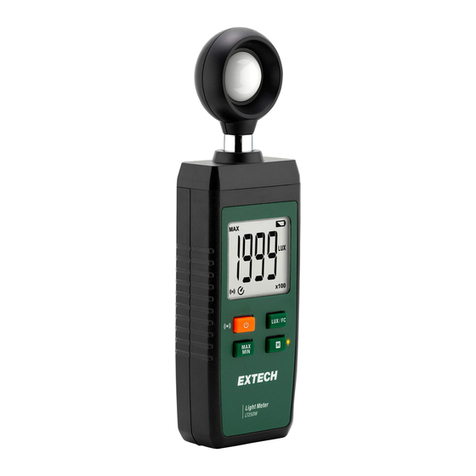
Extech Instruments
Extech Instruments 250W Series user manual

Agilent Technologies
Agilent Technologies 81200 installation guide
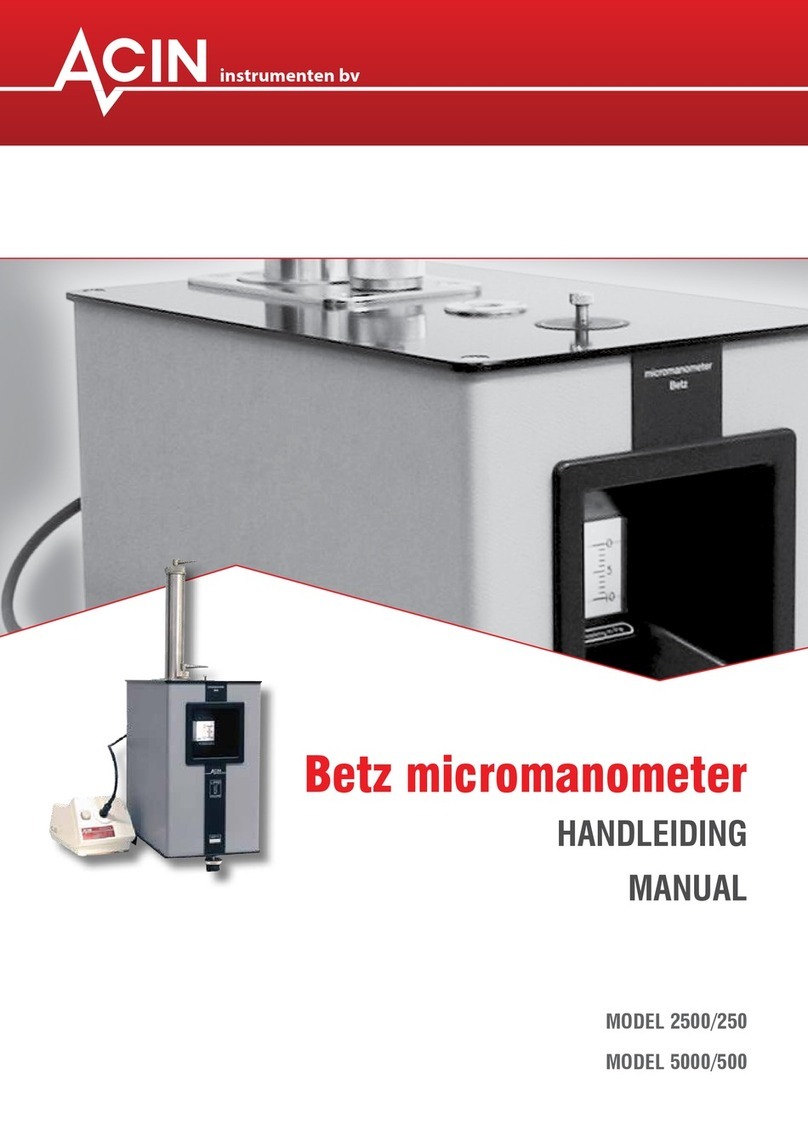
ACIN
ACIN Betz 2500/250 manual
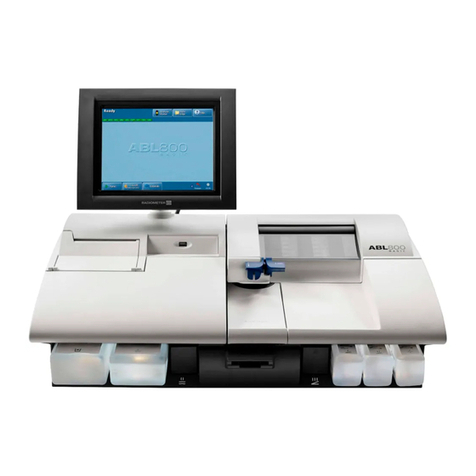
RADIOMETER
RADIOMETER ABL800 FLEX Operator's manual
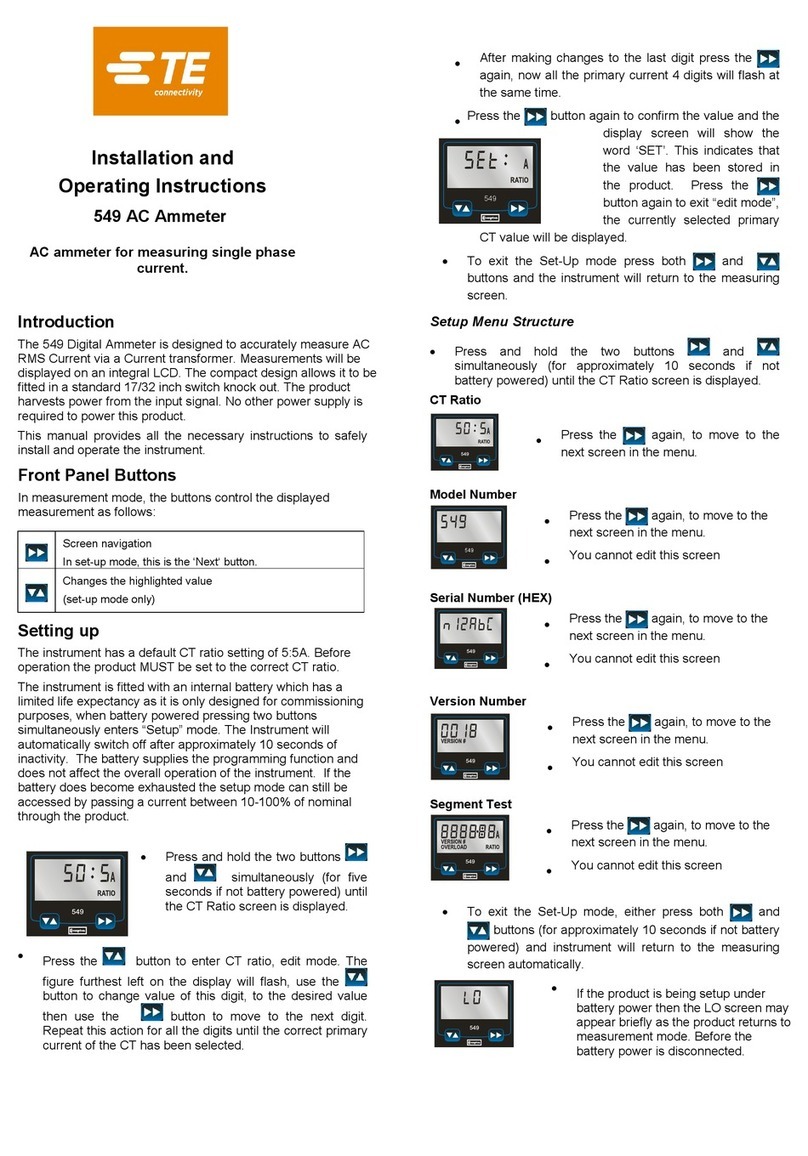
TE Connectivity
TE Connectivity 549 Installation and operating instructions
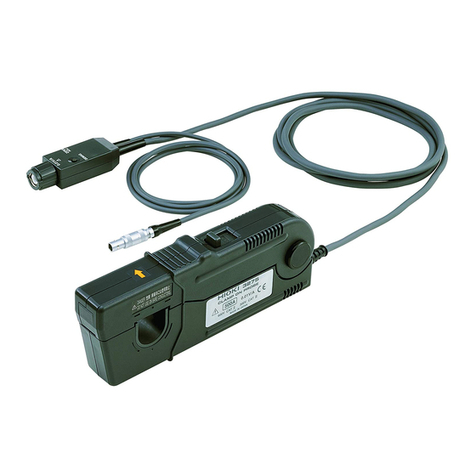
Hioki
Hioki 3275 instruction manual
